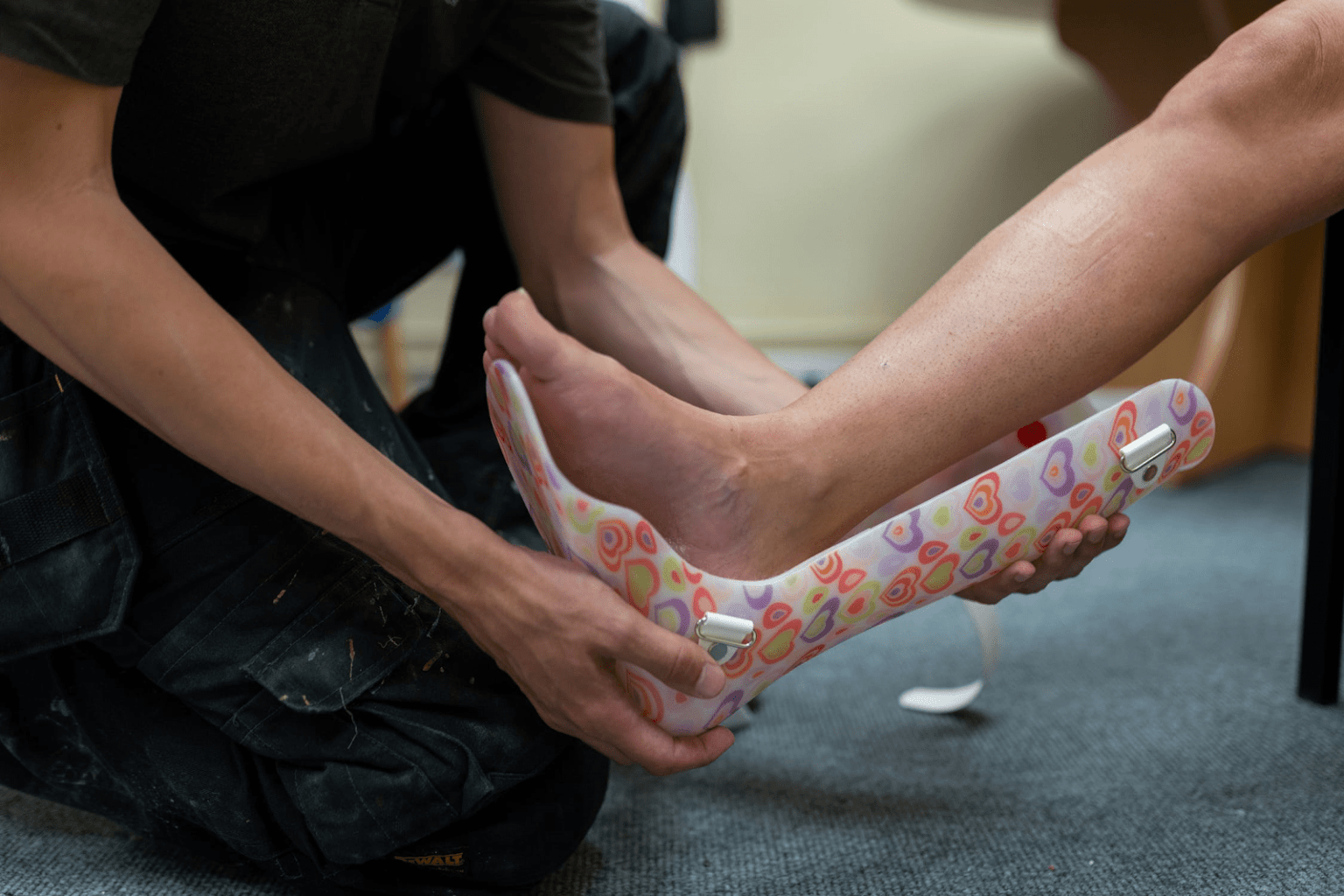Leg pain isn’t uncommon. Most of us have experienced the occasional dull, tired ache that comes after a long walk home. We seldom worry about this, choosing instead to treat it with home remedies. But a sudden sensation of sharp shooting pain in the leg that comes and goes can prove to be a source of concern, especially if it feels unusual.
There are several conditions that can cause shooting leg pain, both mild and severe. Often, we might ignore it, because we expect it to go away on its own. But sometimes, the cause is not as simple as we think. Not knowing when to be concerned could lead to serious, sometimes life-changing, consequences.
We must be aware of all possible reasons for shooting pain in lower leg. It is better to be cautious rather than dismissing any such discomfort and regretting it later.
What does Shooting Pain Lower Leg Feel like?
You may think of this as obvious, but it is important to know what exactly it feels like, so you can pinpoint when it is normal and when it is a concern.
- Sharp shooting pain in the leg that comes and goes can happen in one or both legs, usually in the lower area.
- It starts from there and can travel upwards and downwards along the leg.
- This pain can worsen if you put pressure on the leg, making walking, running and climbing stairs difficult.
- It can be followed by a tingling, numb sensation spreading over the area.
- Sometimes, muscle weakness and twitching in the leg might occur.
- A dull ache and some cramping could follow as well.
What are the causes of Shooting Leg Pain?
Usually, doctors may refer to such pain as intermittent claudication. It affects your calves, hip, buttocks, thighs and the arch of your foot. It commonly occurs due to a disruption in blood circulation which can happen due to a blockage either in or outside the arteries that supply blood to that particular area of the leg. One of the causes of shooting leg pain is muscle strain, which happens if you exert yourself too much.
However, there are incidences when this pain is an early symptom of serious conditions. Ignoring it might worsen the situation.
When should you be Concerned About Leg Pain?
So when should you be concerned about leg pain? Well, in most situations, such pain is mild and goes away with sufficient rest. However, a healthcare professional should be contacted immediately if:
 Pain In Leg
Pain In Leg- The pain is severe or the blood circulation in that area of your leg seems to be severely limited or cut off completely.
- The pain grows over time.
- You experience swelling or discoloration in both legs.
- You experience temperature changes in your legs if your skin feels warm and red or pale and cold.
- Presence of a deep cut on your leg.
- You are experiencing a fever.
- There was a grinding or popping sound when you injured your leg.
Even if the leg pain is mild, remember to rest sufficiently and observe it over the next couple days for any changes.
Conditions that can Cause Leg Pain
Sharp shooting pain in the leg that comes and goes can be an indicator of many underlying conditions. In such a situation, leg pain is usually accompanied by other discomforting symptoms as well. Whether simple or serious, we must know all the possible causes of sharp shooting pain in the leg that comes and goes, so we can give necessary treatment, be it natural herbal remedies or medical procedures. Here is a list of eight conditions that can cause leg pain:
1. Cramps
Cramps are an extremely common cause of leg pain. During cramps, the muscles of the leg contract, causing sudden shooting pain to spread under the skin. A visible lump of muscles may be seen, along with swelling and redness.
The exact cause of cramps is unknown but they are usually linked to muscle exertion, dehydration or the effect of certain medications. Cramps that are not the cause of any medical conditions will go away on their own with enough rest and care. Certain relaxation techniques can be applied to ease cramps.
2. Leg Injuries
Any damage to the leg, including muscle or tendon injury could lead to pain as well. This is usually followed by apparent bruising and swelling. Stress fractures in the bones of the leg or inflammation of the knee could also be another cause. Do a check-up at your local hospital and take a few days off from work or school if necessary.
3. Chronic exertional compartment syndrome
This is usually observed in athletes or people who regularly strain their leg muscles in physical activities like running, swimming or biking. This can cause some numbness in your leg. You may also experience difficulty in your ability to move your leg. Such sharp shooting pain that comes and goes will usually stop if you take a break from exercising and let your muscles recover.
4. Sciatica
Sciatica is a condition in which a pinched nerve in the lower back leads to a sharp electric sensation that travels upwards and downwards your leg. Sciatica is usually a result of degenerative disk disease in which the disks in your spine slowly lose their ability to absorb shock over some time, causing a shift which in turn pinches a nerve.
Leg pain could be accompanied by back pain as well. It is hard to tell the difference between normal back pain and sciatica. Consult your doctor to get a proper diagnosis.
5. Peripheral artery disease
Conditions of the heart can also affect your legs. PAD occurs due to narrowing of arteries. It’s symptoms usually are a sharp shooting pain in the leg that comes and goes, increasing when you use the stairs or walk, followed by numbers and a feeling of strange heaviness over the area. If you have wounds or sores on your legs that are healing slower than usual, they could indicate PAD
6. Entrapment of popliteal artery
There is a pulse located in the part of your leg behind your knee. This pulse is linked to the popliteal artery which is responsible for major blood supply to the lower leg. Thus, a blockage in the artery can lead to a loss of circulation and sharp pain in rare cases. Find out how to detect the popliteal pulse, so that you know how to tell if it weakens.
7. Diabetic neuropathy
This an effect of chronic diabetes. If you have diabetes, you might experience this numbing, sharp sensation from time to time. Make sure to check your legs for any signs of injury as this condition can lead to the inability to sense the presence of wounds.
8. Cysts
Building up of fluid-filled cyst sacs in your leg can also be a possibility. You are more at risk of acquiring these if you are diabetic, overweight or a heavy smoker.
Preventing Shooting Pain in Lower Leg
Taking good care of your health can reduce your chances of experiencing sharp shooting pain in the leg that comes and goes. We are so dependent on our legs daily, we exert them the most out of all our body parts. Thus, close attention must be paid to them, so that you don’t accidentally end up overworking them beyond capacity.
Here are some tips:
- Exercising regularly helps maintain muscle strength.
- Avoid smoking. Smoking increases the possibility of blood clotting, which has been traced to such pain.
- Getting the occasional massage can prove soothing for your muscles.
- Eat nutritious food and follow a balanced diet.
- Switching up from leg-oriented exercises to activities such as aerobics gives your legs the break they need.
Practicing Good Leg Care
The final lesson is: take care of yourself. We might not like our body some days, but without it, we wouldn’t be able to do all the things we love.
Suspecting a serious cause behind leg pain can be anxiety-inducing. But remember that knowing for sure is always better than living in fear of the unknown. Take a friend or family member with you when you got to get your diagnosis. It is okay to ask for the support you need to practice a good healthcare routine.

